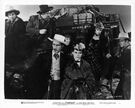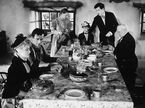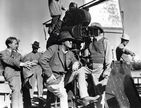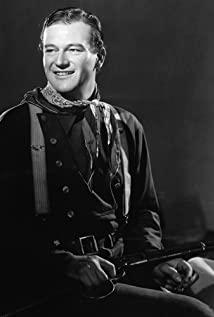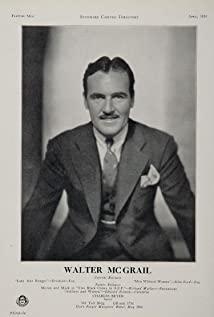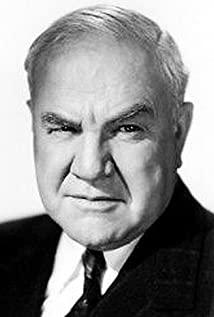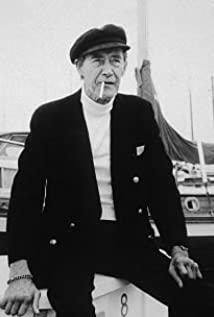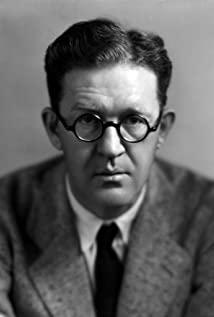From the late 1920s to the late 1960s, Westerns had an unshakable place on the screen. Among them, John Ford was a witness to this era. His works first appeared on the screen in 1928's "Iron Rider", and his last afterglow ended in 1966. In other words, the era of Westerns is also the era of John Ford. In these 40 years, John Ford has created miracles in the history of American cinema and even the history of world cinema with more than 140 films. The average output of 3-4 films a year also makes John Ford one of the most prolific directors in America.
John Ford once said: "Some people call me the greatest poet in the western legend, but I am not a poet, and I do not know what the western epic legend is. I just like those galloping horses in the blue cloud and yellow sand."
Bazan, a famous French film scholar, praised the film: "Flying Over Mount Guan is a masterpiece that has reached a classic, matured style, and is quite perfect. John Ford made the social legend, historical reproduction, psychological The real and traditional mise-en-scène are blended together to achieve perfection and balance. These basic elements are properly arranged, and there is no disadvantage of being too light or heavy. "Guanshan Feidu" is like a beautifully crafted round wheel, which can be rotated to any position on the axis The movement in the direction is uniform and smooth." When watching this film, after clarifying the relationship between the characters, I couldn't help but think of Maupassant's classic book "Ball of Suet", and I searched the Internet and found that it was indeed adapted from this novel. To put it simply, it is a story of a group of people with different identities traveling on the same vehicle. But the film's setting of Indian hunters and white fugitives of various identities turned it into a "Western landmark."
At the beginning of the film, the situation on the border is tense and the Apache Indians rebel. And the group of people who went with them, for various reasons, had to go to Lordsburg through the Indian territory. There were a total of eight passengers, including Sheriff Corey who wanted to capture the fugitive Lin Ge, a pregnant officer who went to look for her husband, a gentleman who volunteered to protect the officer's wife, and a gentleman who was caught by the town." The alcoholic doctor and prostitute Dallas driven out by the Ladies of the Legal League, as well as the banker, whiskey salesman, and Ringo who stopped the car on his way to seek revenge. It can be said that it includes all kinds of characters from all walks of life, and there are even many obvious contrasts and opposites. The film unfolds in the conflict of these characters with opposing identities and personalities. In addition to the driver, the characters of the nine characters in the car are not directly stated, but are slowly revealed through the interaction between the characters, which makes the story full of suspense.
When Dallas is first seen in the film, she (along with another doctor) is being expelled from the town by the Women’s Rule of Law Coalition, a group of charitable Puritan women who aim to maintain a model of community. She protests loudly, stands tall and defiant, and doesn't think she's going to be expelled just because of her profession (it's clear from the second half of the film that she's been orphaned since she was a child).
On the surface, it maintains tranquility and harmony, but in fact the undercurrent is turbulent. The passengers' prejudice against Dallas runs through the entire journey. They did not directly slander her with words, but they bullied a weak woman invisibly with their deliberate indifference and indifference to her. Of all the passengers, only Ringo and the doctor showed the same respect for Dallas relative to all other women. It is said that American film censorship was quite strict at that time, words such as "prostitute", "pregnant" and "virgin" were not allowed on the screen, and couples had to sleep in separate beds when they appeared in the bedroom. Therefore, in "Flying Off the Mountains", the identity of Dallas is implied by her dress and the contempt and insult of others. I think some of the little episodes in the film bring this out very vividly. As in the carriage, only Dallas remained silent, and no one spoke to her. A so-called gentleman showed himself to be very respectful of women, courteous to the officer's wife, but never asked what Dallas thought. When everyone was resting at the station and at the dining table, the passengers "tacitly" sat on the other side far from Dallas. Ling said, "It's like I have the plague." Dallas answered, "No, it's not you." Bitterness and sadness. Despite being stared at all the way, the kind Dallas saw that the officer's wife, Lucy, was unwell because of the cold, and offered to let the other party lean on her, but Lucy, who was clearly huddled in the cold, politely refused.
In "Flying Through the Mountains", unlike in Maupassant's writings when the danger has passed, the poor prostitute is still despised and bullied by her peers after the role of the ball of suet is over. When Lucy heard the news that her husband was seriously injured, she fainted and was about to give birth. A group of men panicked, while Dallas calmly arranged the delivery. At this time, an image of a kind, intelligent and beautiful woman who cast aside secular prejudice appeared in front of the audience. And Dallas, who was holding the child, gave Ringo the idea of marrying him. Dallas took the initiative to help Lucy regardless of his previous suspicions during the production, which has greatly improved her impression in Lucy's mind. She guarded Lucy's child to the death, keeping her under her body, willing to risk being shot or injured herself. And the courage shown in the terrible situation of the Indian attack finally restored her dignity in the eyes of her fellow travelers. Finally, Lucy, who used to despise Dallas, also said to Lucy what Lucy had said to her: "If there is anything I can help (please tell me)"
Ford spends more time on dialogue and characterization in the film. There are no longer simply good guys or bad guys, and even the most hypocritical characters can show a moment of courage in a crisis situation. All in all, the audience understands the characters and better balances their personalities and egos with the expected big action scenes. In the past, there were only one or two main characters in Western films, and the characters were very simple, and their connotations were relatively superficial. However, there are as many as seven or eight characters in "Flying Over Mount Guan", and the characters are more complex and connotations. rich. The film makes a very clear demonstration of the disparate social status and complex emotional relationships of these travelers who meet by chance.
At the end of the film, Ringo and Dallas are allowed to flee across the border to Ringo's farm by the sheriff. When the two drove away in a carriage and started a new life together, this kind woman finally ended like a fairy tale.
Photography, editing, soundtracking, narration, there are many things worth discussing and researching in "Flying Over Mount Guan". The above is my brief analysis of one of the characters.
【references】:
(US) Thomas Schatz: "Hollywood Type Films", Shanghai People's Publishing House, 2009.08, p.56
Zhang Yubin: "Movie Classics that Teenagers Must Know", World Book Guangdong Publishing Company, 2010.05, p.12
Zhang Qiming: Quick Reading of World Film Masterpieces, Xinjiang Fine Arts Photography Publishing House, 2011.07, p.93
Zheng Xuelai: Dictionary of World Film Appreciation, Fujian Education Press, 2013.04, p. 213
He Chungeng: "A Representation of Chinese and Western Film Culture", Tangdu Journal 2004, p. 61
View more about Stagecoach reviews



